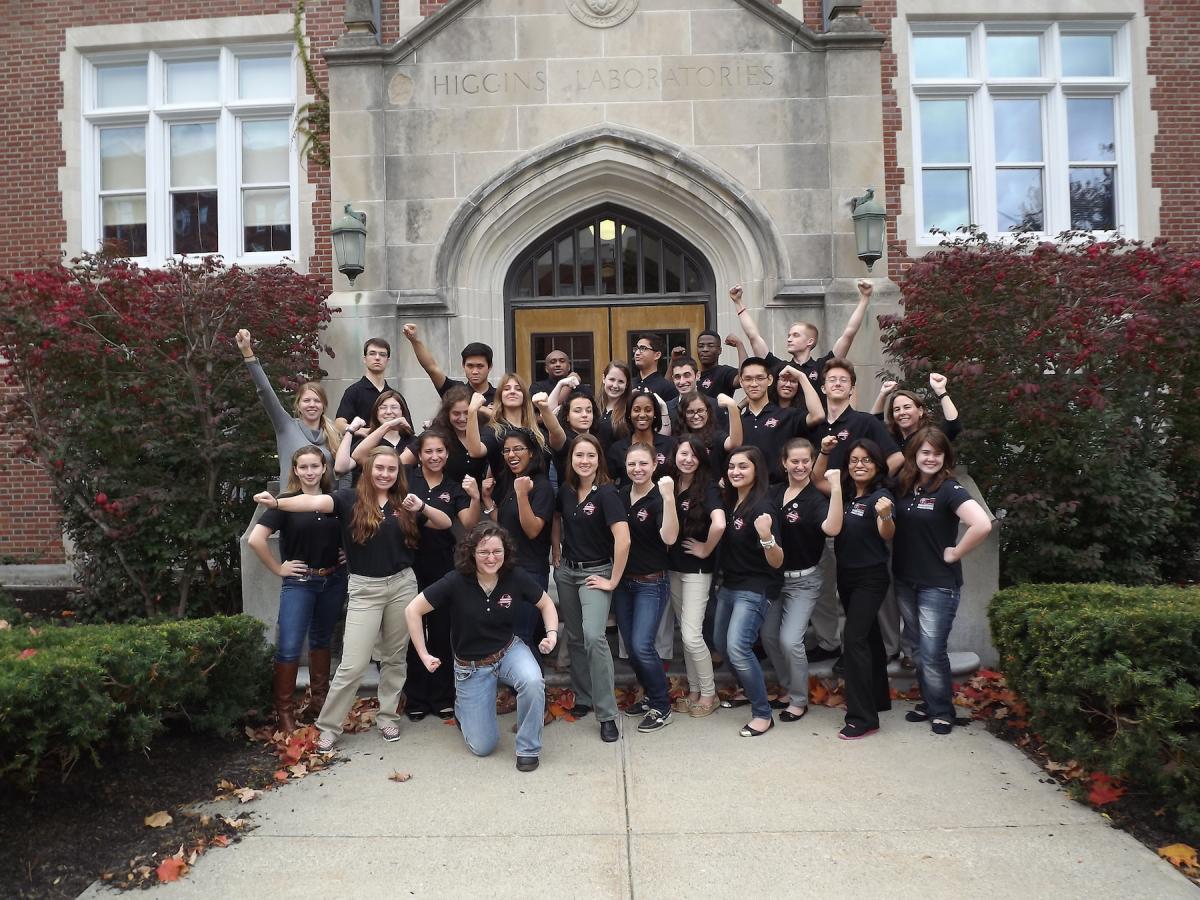Ambassadors reap benefits as well, and the program is gaining strength. WPI’s EA program launched in 2011 with 10 ambassadors; this year 33 ambassadors are scheduled for 30 outreach events with the hope to reach 2,000 students.
Senior mechanical engineering major Emily Miner thought the program sounded interesting when she applied freshman year. “I was not good at public speaking, so I was hesitant,” she recalls. But once accepted, the intense preparation made presentations easier, and the reactions from the kids kept her going. The message, she says, is to let them know how engineering affects the health, safety, and happiness of the community.
Academically and professionally, Miner says the program is exceptional and landed her internships at Sikorsky Aircraft. “It was a great experience for me,” says Miner, who worked in the structural analysis department the past two summers. “Last year I went back to the same department and got even more out of it. I contributed more, understood more, and the project was more in depth.”
The ambassadors develop interactive presentations showing both the how and the why. A recent air-resistance demonstration included parachute making so the kids could test the idea, says Miner. “They are having fun, but learning too.” Showing the students how engineering impacts almost everything in their lives is an eye-opener.
The process for becoming an engineering ambassador is rigorous, says McElholm. Qualified and interested students must fill out an application and, if accepted, must create a one-minute presentation about themselves. Only certain majors are considered (per UTC specification) including mechanical, aero, electrical, and computer engineering, but other sponsors bring in different majors as well, says McElholm. Most ambassadors have summer internships with the sponsoring companies, and must attend weekly meetings during the school year.
What makes a great ambassador? “Someone who wants to raise the visibility of engineering as a career,” says McElholm, “and someone who is courageous in a sense to be able to build a presentation and get up in front of everyone with it.”
McElholm says the program is gaining footing nationwide with various associations showing interest and assessing how it works. In addition, a national Engineering Ambassadors Network has been formed to link programs nationwide.
“The [ambassadors] are communication virtuosos to excite the younger generation,” says McElholm with a laugh.” They are publicizing the messages, but also finding out what messages resonate with young people about engineering.”
And while the internships, leadership skills, and professional growth opportunities are incredible, Miner says working with the young students is inspiring. “I am so very happy after I spend time with the kids,” she says. “And the questions they ask will blow you out of the water. It’s great to see that because they are our future.”
By Julia Quinn-Szcesuil

